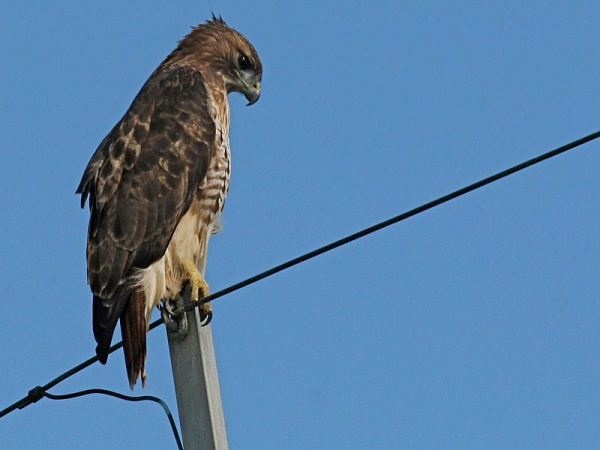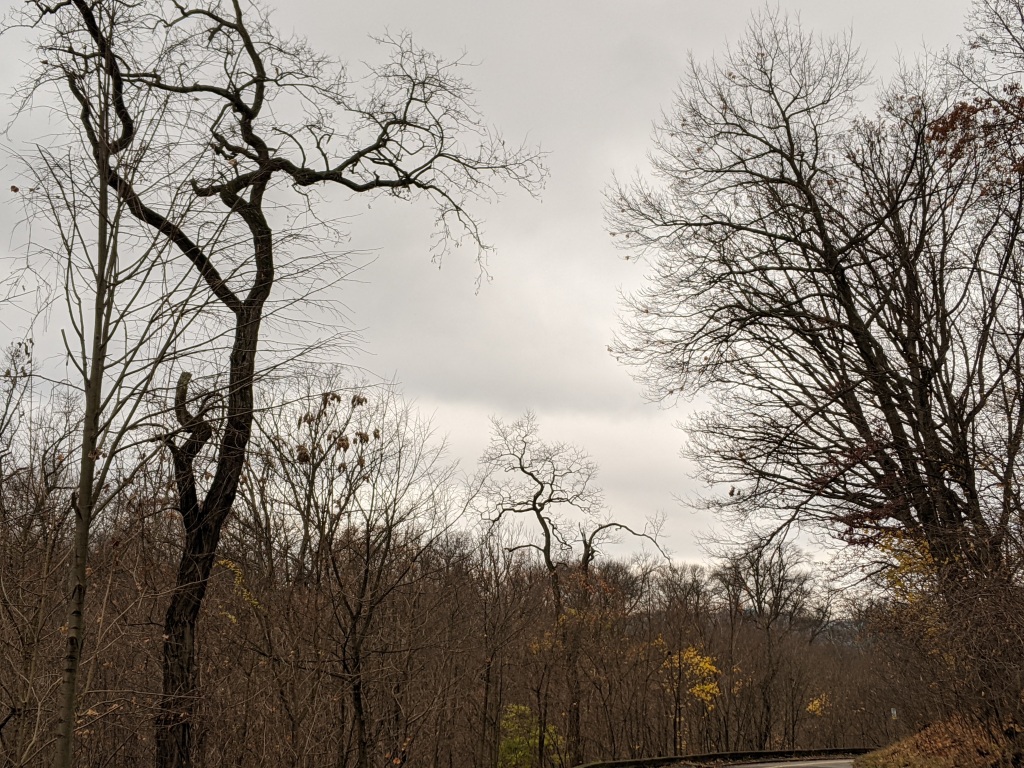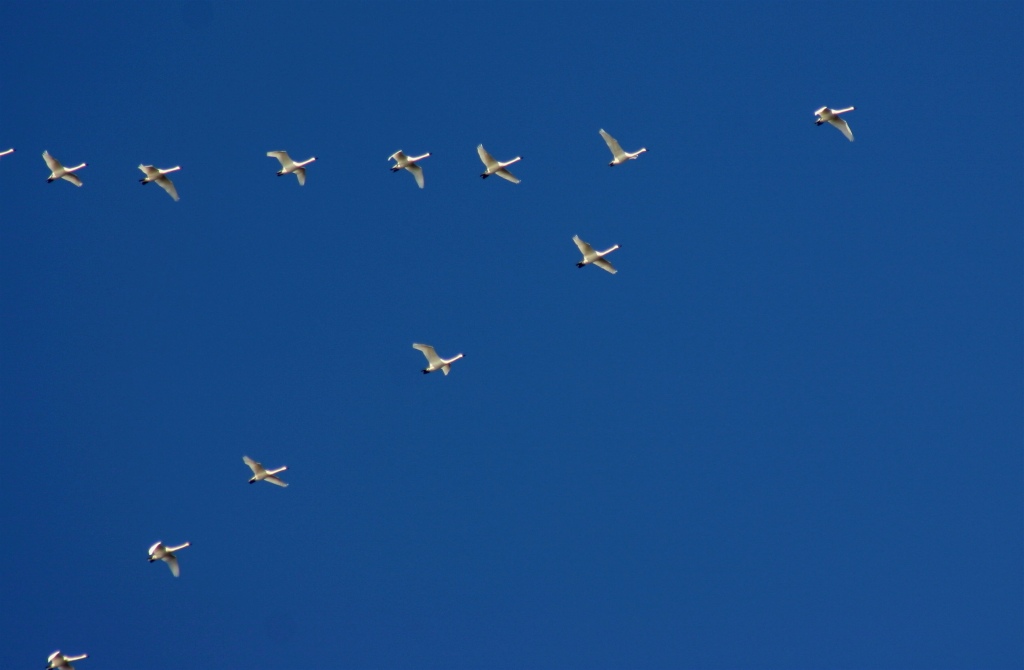
14 November 2007
“Your bird is out there above the dumpsters.” That’s what Cliff, our maintenance man, tells me at least once a week at WQED Pittsburgh.
Many people at work know that I’m interested in birds and at WQED the two most interesting birds are the pair of red-tailed hawks who’ve claimed the surrounding territory. I am sure to hear when they’re nearby.
This pair has made themselves famous by hunting for rodents behind the dumpsters (good job!), for soaring together and mating on top of Central Catholic High School, for eating a rabbit in a tree outside our third floor windows, and for ignoring their loudly whining youngsters who are too old to be begging from mom and dad.
And they look just plain huge when perched.
The red-tails have generated a lot of questions over the years. Some of the answers are…
- They live in the city because there’s enough to eat and they aren’t harassed in town.
- They eat rabbits, chipmunks, squirrels, mice, rats and pigeons. I am especially glad they eat rats.
- They won’t try to eat something that will put up a fight because they can’t afford to get hurt while catching dinner. They are very, very unlikely to attack a small dog or cat.
- Because they pounce on their prey from above, red-tails like to perch on tall dead trees. To a red-tail, light posts on the Parkway look like tall dead trees.
- Yes, they have a nest somewhere near here but only in spring. Their nest is the babies’ bed. The adults don’t live in the nest themselves.
- It is a sign of courtship when the male brings a dead chipmunk to his mate.
- They are ignoring that loud, whining hawk because he’s their kid. He has to learn to hunt and if they feed him he will never learn. He thinks begging will break their resolve.
- If two red-tails are perched next to each other, they are either mates or parent and child. Red-tails don’t make friends with other red-tails.
Today the red-tails were busy, busy. Hunting. A cold front is coming tonight and they had to eat today because they don’t know how long bad weather will last. Better to face the storm with a full stomach. In winter it’s a matter of life and death.
(photo by Chuck Tague)
 No gray skies today! I took this picture at lunch time.
No gray skies today! I took this picture at lunch time.
